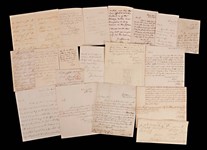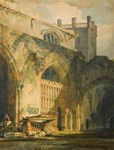
On Nee Yeath Tow No Riow or King John of Canajoharie, a mezzotint c.1710 by John Faber the Elder, $29,000 (£22,900) at Tremont Auctions.
During his travels to Europe, Winfield Robbins (1841-1910) collected some 150,000 prints that he later left to his hometown of Arlington. After recent approval was given to sell elements of the collection, selections will be offered by Tremont, also based in Massachusetts, in upcoming sales.
The Mohawk King John
The financial highlight of this tranche was a rare mezzotint of one of the so-called ‘the Four Indian Kings’, the native American chiefs that visited London in 1710.
Based on a series of official portraits commissioned by Queen Anne from the Anglo-Dutch artist John Verelst (1648-1734), these are considered the earliest-known surviving portraits from life of the native people of North America.
This example, from a series by John Faber the Elder, is titled On Nee Yeath Tow No Riow or King John of Canajoharie.
He was one of three Mohawk chiefs from the Haudenosaunee (Iroquois) alliance and one Mohican from the Algonquin nations, that were received in London as diplomats and were transported through the streets of the city to St James’s Palace in royal carriages.
The print was expected to bring $2000-3000 but sold at a muscular $29,000 (£22,900).
Two other mezzotints from the series, including Tee Yee Neen Ho Ga Row, Emperour of the Six Nations engraved by John Simon and Coning vande Maquas alias Coning Brant engraved by Peter Schenk the Elder were sold by the auction house in August (ATG No 2612). They made $12,000 and $16,000 respectively.
‘First US mezzotint’
The portrait of the venerable Congregational minister Cotton Mather published by Peter Pelham in Boston in 1727 is considered the first American mezzotint.
Pelham was already regarded as an accomplished engraver and artist when he arrived in Massachusetts from London but Mather was his first subject on American soil.
Though he posed for Pelham’s painted study (part of the collections at the American Antiquarian Society), the minister would not live to see the final mezzotint as he died four months before the print’s publication. The copy here sold for $4200 (£3300), well above the estimate of $400-600. Another example sold at Sotheby’s New York in 2021 for $4000.
A portrait of Albert Einstein by German-Jewish artist Hermann Struck (1876-1944) sold for $4600 (£3600). A specialist in etchings, Struck made a number of portraits of Einstein (as well as other great minds of his generation including Wilde, Nietzsche, Freud, and Ibsen) but this relatively youthful image is thought to be the earliest.
Published around the time of the experimental confirmation of the theory of relativity in November 1919 had made front-page news across the world, it is perhaps the earliest attempt to commercialise an artistic image of Einstein.
Numbered 20/150, this is one of the 50 in the edition also signed and dated 1923 by Einstein himself in pencil lower right.














